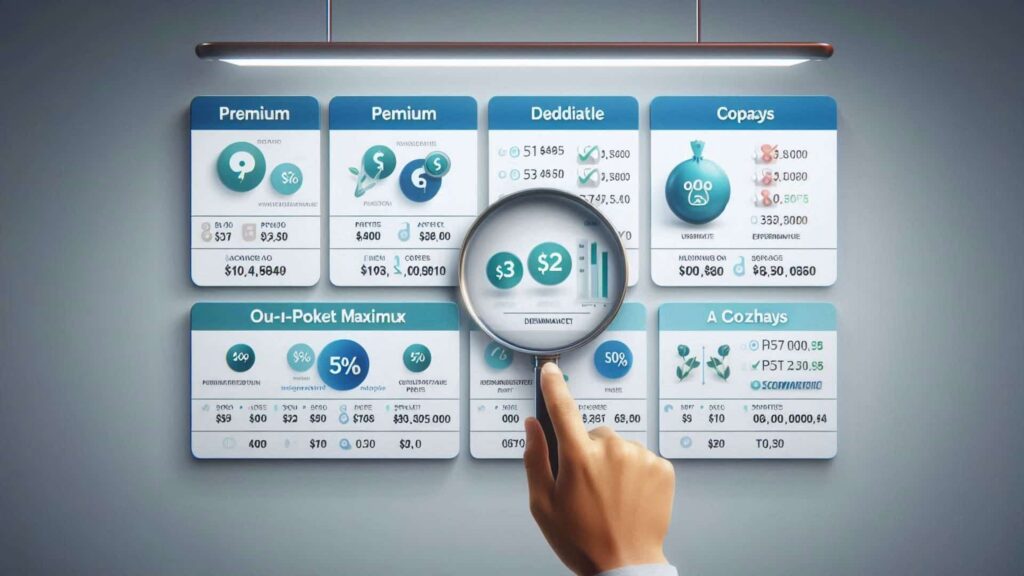Finding the right health insurance plan for your family can seem like a lot to handle, right? With so many options out there, different terms to understand, and a whole bunch of fine print, it’s no wonder most people feel confused. But don’t worry—you’re not alone, and by the end of this guide, you’ll know exactly what to look for.
Health insurance is super important because it’s not just about saving money—it’s about making sure your family can get the medical care they need when they need it. From regular checkups to unexpected emergencies, having the right coverage can make a huge difference. No one wants to be stuck with massive medical bills or, even worse, struggle to afford care.
In this article, I’ll walk you through the steps to choosing the best health insurance plan for your family. We’ll talk about the types of plans, how to figure out your family’s specific needs, and how to compare options. By the end, you’ll feel confident in picking a plan that fits both your budget and your family’s healthcare needs.
2. Understanding Health Insurance Basics

Before we dive into choosing the right plan, it’s important to get a handle on some of the basic terms and types of health insurance out there. Don’t worry, we’ll keep it simple!
What is Health Insurance?
Health insurance is basically a contract between you and the insurance company. You pay a monthly premium (that’s your payment for the plan), and in exchange, they help cover the costs of medical care. Sounds simple enough, right? But there’s more to it.
You don’t just pay the monthly premium and forget about it. You also have things like deductibles, copayments, and out-of-pocket limits to deal with. Let’s break those down quickly:
- Premium: This is the monthly amount you pay for your health insurance.
- Deductible: This is the amount you pay before your insurance starts covering costs. For example, if your deductible is $1,000, you’ll need to spend $1,000 out-of-pocket before your insurance kicks in.
- Copayments and Coinsurance: These are the amounts you still have to pay after your insurance has started helping out. For example, you might have to pay $20 for each doctor visit (this is your copayment) or 20% of a hospital bill (this is called coinsurance).
- Out-of-Pocket Maximum: This is the most you’ll ever have to pay in a year. Once you hit this limit, the insurance covers 100% of any further medical costs.
Types of Health Insurance Plans
There are a few different types of health insurance plans, and it’s good to know what they are because each one works a little differently. Here are the most common ones:
- HMO (Health Maintenance Organization): HMOs are usually cheaper, but you have to stick to a specific network of doctors. You’ll also need a referral from your primary doctor if you want to see a specialist.
- PPO (Preferred Provider Organization): With a PPO, you get more flexibility. You can see any doctor you want, but if you go out-of-network, it’ll cost more. These plans are usually more expensive.
- EPO (Exclusive Provider Organization): EPOs are like a mix of HMOs and PPOs. They’re cheaper than PPOs but don’t cover out-of-network doctors unless it’s an emergency.
- HDHP (High Deductible Health Plan): These plans have lower monthly premiums but a high deductible. They’re great for people who don’t need a lot of medical care, but they can be risky if you suddenly need expensive treatment. Pairing this with a Health Savings Account (HSA) can help save on taxes and medical costs.
3. Assessing Your Family’s Needs
Now that we’ve covered the basics, it’s time to think about your family’s specific health needs. This is where you need to be honest and realistic about what kind of medical care you’re likely to need over the next year. Let’s break it down:
1. Health History
Does anyone in your family have pre-existing conditions or chronic health issues? For example, if someone has diabetes or asthma, they’ll need regular care and medications, so you’ll want a plan that covers those costs well.
2. Age of Family Members
If you have young kids or elderly parents to care for, they’ll likely need more frequent visits to the doctor. Kids need pediatricians, vaccines, and checkups, while older adults may have specific health concerns, like managing blood pressure or heart conditions.
3. Regular Doctor Visits
How often does your family go to the doctor? Some families may only need an annual checkup, while others need to visit specialists or pediatricians more frequently. If you see doctors often, a plan with lower copayments might be a good idea.
4. Prescription Medications
If someone in your family takes regular medications, you’ll need to check if those drugs are covered under the plan’s formulary (a fancy word for their approved drug list). It’s also important to see if there’s a difference in cost between generic and brand-name drugs.
5. Lifestyle Considerations
Does your family live an active lifestyle with lots of sports or outdoor activities? If so, you might want to think about whether your plan covers things like physical therapy or sports injuries. And don’t forget preventive care like vaccinations, flu shots, and regular wellness checks.
By thinking through these questions, you’ll have a much better idea of what kind of coverage your family actually needs. This will help you narrow down your options when it’s time to compare plans.
4. Types of Health Insurance Plans: Pros and Cons
Now that you know the basics and have a good idea of your family’s health needs, let’s talk about the different types of health insurance plans and their pros and cons. This way, you’ll know what each plan offers and which one will work best for your situation.
Health Maintenance Organization (HMO)
HMOs are pretty popular because they tend to be more affordable.
- Pros:
- Lower monthly premiums and out-of-pocket costs.
- Focuses on preventive care—which is great if you’re someone who likes to stay on top of your health.
- You’ll have a primary care physician (PCP) who manages your overall healthcare.
- Cons:
- You have to stick to in-network doctors (meaning you can’t just see any doctor you want).
- Referrals required to see a specialist, which can sometimes be a hassle if you need special care quickly.
- Limited flexibility—you can’t go out-of-network unless it’s an emergency.
Preferred Provider Organization (PPO)
PPOs are a bit more flexible, but that usually comes with a higher price tag.
- Pros:
- No need for referrals to see specialists—just make an appointment directly.
- You have the option to see out-of-network doctors, though it’ll cost more.
- Usually comes with a larger network of providers, so more choices overall.
- Cons:
- Higher premiums and out-of-pocket costs than an HMO.
- Out-of-network care can get expensive quickly, so it’s important to weigh how often you’ll need it.
Exclusive Provider Organization (EPO)
EPOs are like a mix between HMO and PPO plans. You get a bit of flexibility, but there are limits too.
- Pros:
- Lower premiums than PPOs.
- You don’t need referrals for specialists, which gives you more freedom.
- Cons:
- No out-of-network coverage unless it’s an emergency, so you’ll need to stick to doctors within the network.
- Limited provider network compared to PPOs, so check to see if your preferred doctors are included.
Point of Service (POS)
POS plans also combine features of HMO and PPO plans, but the main point is you have a primary care doctor guiding you.
- Pros:
- Flexibility to go out-of-network, but at a higher cost.
- You can see specialists with a referral, but it gives you a bit more control compared to an HMO.
- Cons:
- Referrals are still required, which can delay the process of getting specialized care.
- Out-of-network care is expensive, and you need to handle more paperwork for those claims.
High-Deductible Health Plan (HDHP) with Health Savings Account (HSA)
HDHPs can be great for families that don’t expect to use much medical care throughout the year. Pairing it with an HSA can offer some tax benefits too.
- Pros:
- Lower premiums than most other plans—good if you’re trying to save month-to-month.
- You can open an HSA (Health Savings Account), which lets you save money tax-free for medical expenses.
- Cons:
- High deductibles mean you’ll pay more out-of-pocket before insurance kicks in.
- Not ideal if you expect a lot of medical visits or need ongoing treatment.
5. How to Compare Health Insurance Plans

Once you’ve narrowed down the types of plans that fit your family’s needs, it’s time to compare them side-by-side. Here’s what you should focus on when comparing different health insurance options:
1. Network of Providers
The network is a big deal. You’ll want to make sure your preferred doctors, specialists, and hospitals are included in the plan’s network. Otherwise, you could end up paying a lot more for out-of-network care, or worse, not being able to see the doctors you want at all.
- Tip: Always check the plan’s provider directory to make sure your family’s doctors are in-network.
2. Plan Benefits
Make sure the plan covers the specific benefits your family needs. Some plans are great for basic coverage but may fall short on things like maternity care, mental health services, pediatric care, or vision and dental. If you need specialized care, it’s important to know what’s covered upfront.
- Important: Look for plans that cover preventive services like immunizations, annual checkups, and screenings without charging a copay.
3. Costs (Beyond Just the Premium)
It’s tempting to just go for the plan with the lowest monthly premium, but that’s not the full story. You also need to think about:
- Deductibles: How much do you need to pay before the insurance kicks in?
- Copayments/Coinsurance: What will you have to pay each time you visit the doctor, fill a prescription, or go to the hospital?
- Out-of-pocket maximum: This is the most you’ll have to pay in a year. After that, the insurance company covers everything. Look for a reasonable limit that you’re comfortable with in case of a worst-case scenario.
4. Prescription Drug Coverage
If anyone in your family needs regular medications, make sure the plan covers those drugs. Check the formulary (the list of covered medications) to see if your prescriptions are included. Some plans offer cheaper rates for generic drugs, while brand-name drugs might cost more.
- Tip: Look into mail-order pharmacy options, which can sometimes save you money on prescriptions.
5. Special Features
Some health insurance plans come with extra perks like telemedicine, discounts on gym memberships, or wellness programs. While these aren’t usually deal-breakers, they can add value, especially if your family likes staying active and healthy.
6. Common Mistakes to Avoid When Choosing a Health Plan
When you’re trying to find the best health insurance plan for your family, it’s easy to make a few missteps. Here’s what to watch out for:
- 1. Focusing Only on Premiums
- Sure, a low premium looks great, but if the deductible is sky-high or your copays are huge, it might not be worth it in the long run.
- 2. Ignoring the Provider Network
- Don’t forget to check if your doctors are in-network. If not, you could end up with much higher costs for out-of-network care.
- 3. Not Considering Long-Term Needs
- If you only think about the next 6 months, you might miss the bigger picture. Think about upcoming family health changes, like a new baby or chronic illness management.
- 4. Missing Enrollment Deadlines
- Be sure to mark your calendar for open enrollment! If you miss it, you could end up without coverage until the next year (unless you qualify for a special enrollment period).
6. Common Mistakes to Avoid When Choosing a Health Plan
When you’re trying to find the best health insurance plan for your family, it’s easy to make a few mistakes along the way. Here are some of the most common pitfalls people run into—and how you can avoid them.
1. Focusing Only on Premiums
It’s tempting to pick the plan with the lowest monthly premium because it feels like you’re saving money. But if the plan has a high deductible or copays, you might end up paying more in the long run. For example, if you have to visit the doctor regularly or have ongoing prescriptions, a low-premium plan might hit you with high out-of-pocket costs later. So, always look at the big picture—premium, deductible, copays, and out-of-pocket maximum.
2. Ignoring the Provider Network
One of the most frustrating mistakes is choosing a plan without checking if your doctors are in-network. Out-of-network doctors can be significantly more expensive, and some plans might not cover them at all. Before signing up, double-check that your family’s favorite doctors and hospitals are included in the plan’s network.
3. Not Considering Long-Term Health Needs
Sometimes we focus only on our current situation, but healthcare needs can change over time. Think about the next year—are you planning for a baby? Is there a chance someone in your family might need surgery or extra care? Don’t just think about your immediate needs—try to plan for what could come up down the road.
4. Missing Enrollment Deadlines
Health insurance usually has an open enrollment period each year. If you miss it, you may have to wait until the next year to get coverage unless you qualify for a special enrollment period (like losing other coverage or having a baby). Mark the dates on your calendar to make sure you don’t miss out on signing up or switching plans.
5. Forgetting to Review Prescription Drug Coverage
If anyone in your family takes regular prescription medications, you’ll want to make sure those drugs are covered by the plan you choose. Always check the plan’s formulary (the list of drugs it covers) to avoid any surprises at the pharmacy. Some plans may have higher costs for brand-name drugs, so if you can switch to generic, it might save you money.
7. How to Enroll in a Health Insurance Plan

Once you’ve found the right plan, it’s time to actually enroll. This part is pretty straightforward, but there are a few key things to keep in mind to ensure the process goes smoothly.
1. Know Your Enrollment Period
As mentioned earlier, most health insurance plans have specific enrollment windows when you can sign up or make changes to your coverage. Here are the common ones:
- Open Enrollment: This is the main period when you can sign up for a new plan or switch plans. It usually happens once a year, and the dates can vary depending on where you live.
- Special Enrollment Period: If you experience a major life change—like getting married, having a baby, or losing other health coverage—you may qualify for a special enrollment period, which lets you enroll outside of the usual time frame.
2. Gather Your Information
Before you sit down to enroll, make sure you have all the necessary information ready. You’ll usually need:
- Personal information: This includes details for each family member you’re enrolling, like names, birthdays, and Social Security numbers.
- Current health coverage info: If you have insurance through an employer or a different provider, you may need to provide details about your current plan, especially if you’re switching coverage.
- Income information: If you’re applying through the Health Insurance Marketplace, they’ll ask for information about your household income to see if you qualify for premium tax credits or other savings.
3. Enroll Online, Over the Phone, or In-Person
There are a few ways to enroll, depending on where you’re getting your insurance:
- Health Insurance Marketplace: If you’re getting coverage through the marketplace (healthcare.gov or your state’s site), you can apply online, by phone, or with the help of an in-person assistant. You’ll also be able to compare different plans and prices in your area.
- Employer-Sponsored Plan: If your health insurance is through your job, your HR department or benefits portal will guide you through the enrollment process. They’ll usually let you know when open enrollment starts and what your options are.
- Direct Enrollment with an Insurer: If you’re buying a plan directly from an insurance company, you can often sign up on their website or call their customer service to complete your enrollment.
4. Review Your Plan Before Finalizing
Before you hit the final submit button, take a moment to review everything. Double-check that you’ve selected the right plan and that your doctors, prescriptions, and other healthcare needs are covered. Also, make sure the monthly premium and other costs are what you expect.
5. Confirmation and Next Steps
Once you’ve enrolled, you’ll usually get a confirmation email or letter with details about your new plan. If you’re switching plans, you’ll also receive a notice about when your new coverage starts. Keep this information handy in case you need to reference it later. Make sure to set up automatic payments if needed, so you don’t miss any premium payments, which could cause a lapse in coverage.
8. Tips for Making the Most of Your Health Insurance
Now that you’ve chosen and enrolled in the best health insurance plan for your family, let’s talk about how to actually use it wisely. Here are a few tips to get the most out of your coverage:
1. Use Preventive Care Services
Most plans cover preventive care (like annual checkups, vaccines, and screenings) at no extra cost to you. Take advantage of these services to keep your family healthy and avoid more serious (and expensive) health problems down the road.
2. Stay In-Network
Whenever possible, stick to in-network providers. This will save you a lot of money compared to going out-of-network, where costs can be much higher. If you’re not sure if a doctor is in your network, you can call your insurance company or check online before making an appointment.
3. Use Telemedicine When Available
Many health insurance plans now offer telemedicine services, where you can consult with a doctor or specialist from the comfort of your home. It’s convenient, and in many cases, it’s cheaper than an in-person visit.
4. Review Your Explanation of Benefits (EOB)
After you receive care, your insurance company will send you an Explanation of Benefits (EOB), which breaks down what was billed, what the insurance covered, and what you owe. Always review this document to make sure the charges are accurate and that you’re being billed correctly.
5. Keep Track of Medical Expenses
If you have a Health Savings Account (HSA) or Flexible Spending Account (FSA), keeping track of your medical expenses can help you maximize those benefits. You can also deduct certain medical expenses from your taxes if they exceed a certain amount of your income.
9. Final Thoughts on Choosing the Best Health Insurance Plan for Your Family
Choosing the right health insurance plan for your family can feel like a big task, but it doesn’t have to be overwhelming. By breaking down the process step by step and considering the specific needs of your family, you can make a decision that ensures you’re covered when it matters most.
Here are the key takeaways to keep in mind:
- Assess your family’s health needs: Understanding the type and frequency of care you need will help guide your decision.
- Compare different plan types: Each type of plan (HMO, PPO, EPO, POS, or HDHP) has its own pros and cons. Choose one that balances your budget with your healthcare needs.
- Don’t just focus on premiums: While the monthly premium is an important factor, don’t forget to consider the deductibles, copays, and out-of-pocket maximums. These can make a big difference in your overall healthcare costs.
- Make sure your doctors are in-network: To avoid surprise bills, double-check that your preferred healthcare providers are covered by the plan you choose.
- Look at prescription drug coverage: If you or your family members take regular medications, make sure the plan covers them and check for cost-saving options like generic drugs or mail-order services.
- Don’t miss enrollment periods: Whether it’s open enrollment or a special enrollment period, knowing when and how to sign up for coverage is crucial.
By following these steps, you’ll be able to find a health insurance plan that gives you peace of mind, knowing your family is protected without breaking the bank.
Remember, the best plan isn’t necessarily the one with the lowest cost or the most bells and whistles. It’s the one that fits your family’s unique needs while balancing cost, flexibility, and coverage. So, take your time, review your options carefully, and don’t hesitate to reach out to an insurance expert if you need help making a decision.
Frequently Asked Questions (FAQs)
Let’s wrap up with some common questions people ask when choosing a health insurance plan.
1. How can I tell if a plan is good for my family?
A good plan should cover your family’s essential health needs (doctor visits, prescriptions, emergency care, etc.) without forcing you to spend more than you can afford. Look for a balance between the monthly premium, deductible, and out-of-pocket maximums.
2. Is a low premium always better?
Not necessarily. While a low premium may seem appealing, it often comes with higher deductibles and copays, which means you’ll pay more when you actually use healthcare services. It’s important to compare the total cost of the plan (not just the premium) to understand what you’ll be spending overall.
3. What if I have a chronic condition?
If someone in your family has a chronic condition, you’ll want a plan that offers comprehensive coverage and low out-of-pocket costs for the type of care they need. Make sure the plan covers any specialists or treatments involved in managing the condition.
4. Can I switch plans if I’m not happy with my choice?
Yes, but only during open enrollment periods or if you qualify for a special enrollment period. If you’re unhappy with your current plan, use the next open enrollment period to explore other options that might better meet your needs.
In Conclusion
Picking the right health insurance plan might feel like a lot, but by breaking it down into simple steps and asking the right questions, you’ll find a plan that makes sense for your family’s needs. Remember, the right plan offers more than just affordability—it gives you confidence that your family will be well taken care of, no matter what the future holds.
Take your time, compare your options, and choose wisely. Your family’s health is worth it!
Also Read: Top Auto Insurance Companies with the Best Rates 2025

